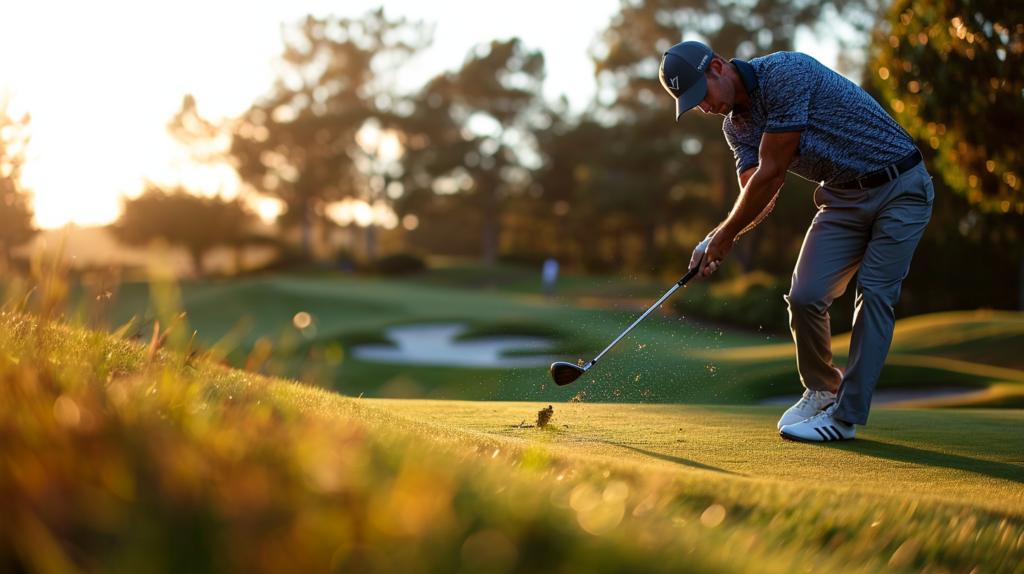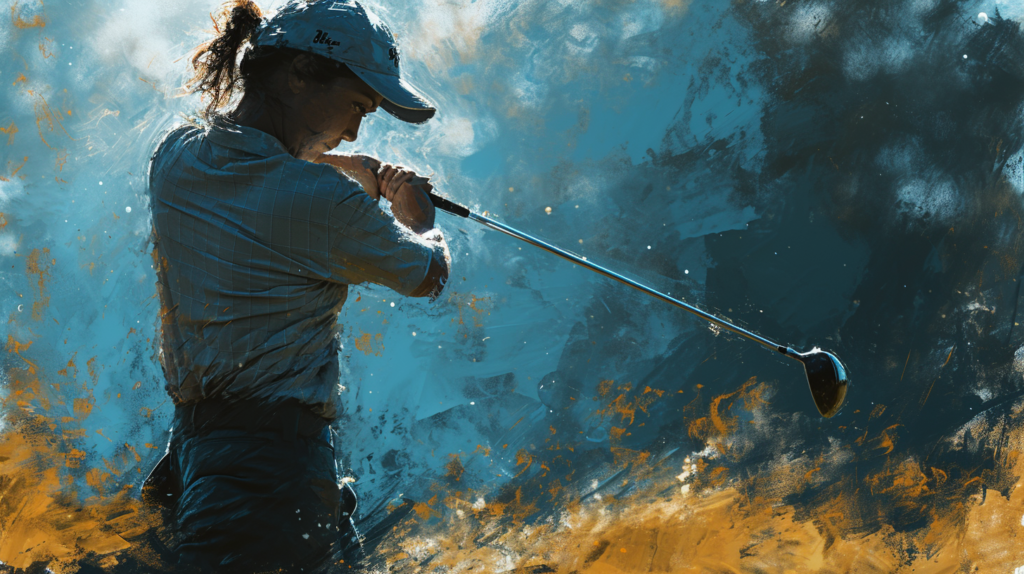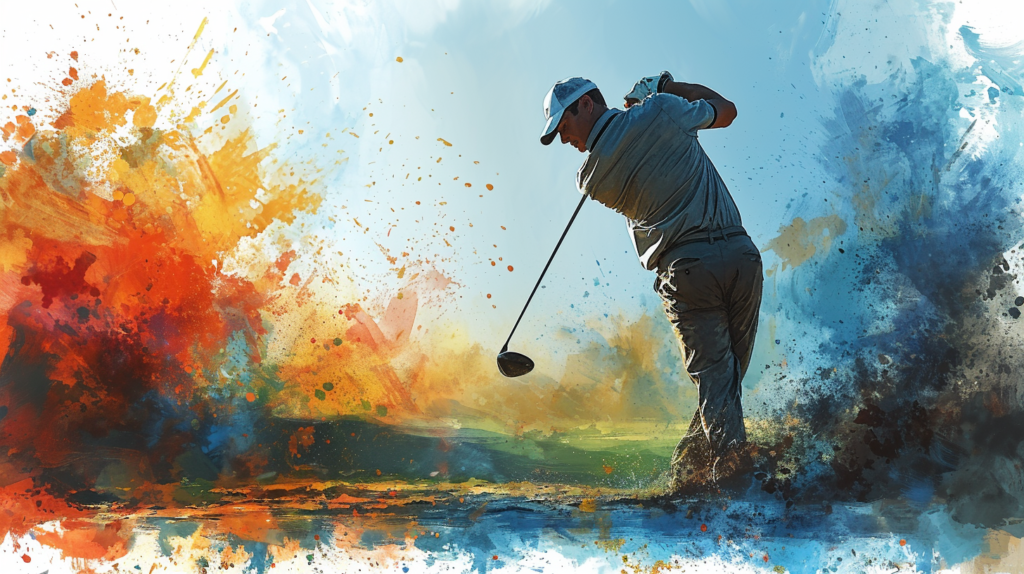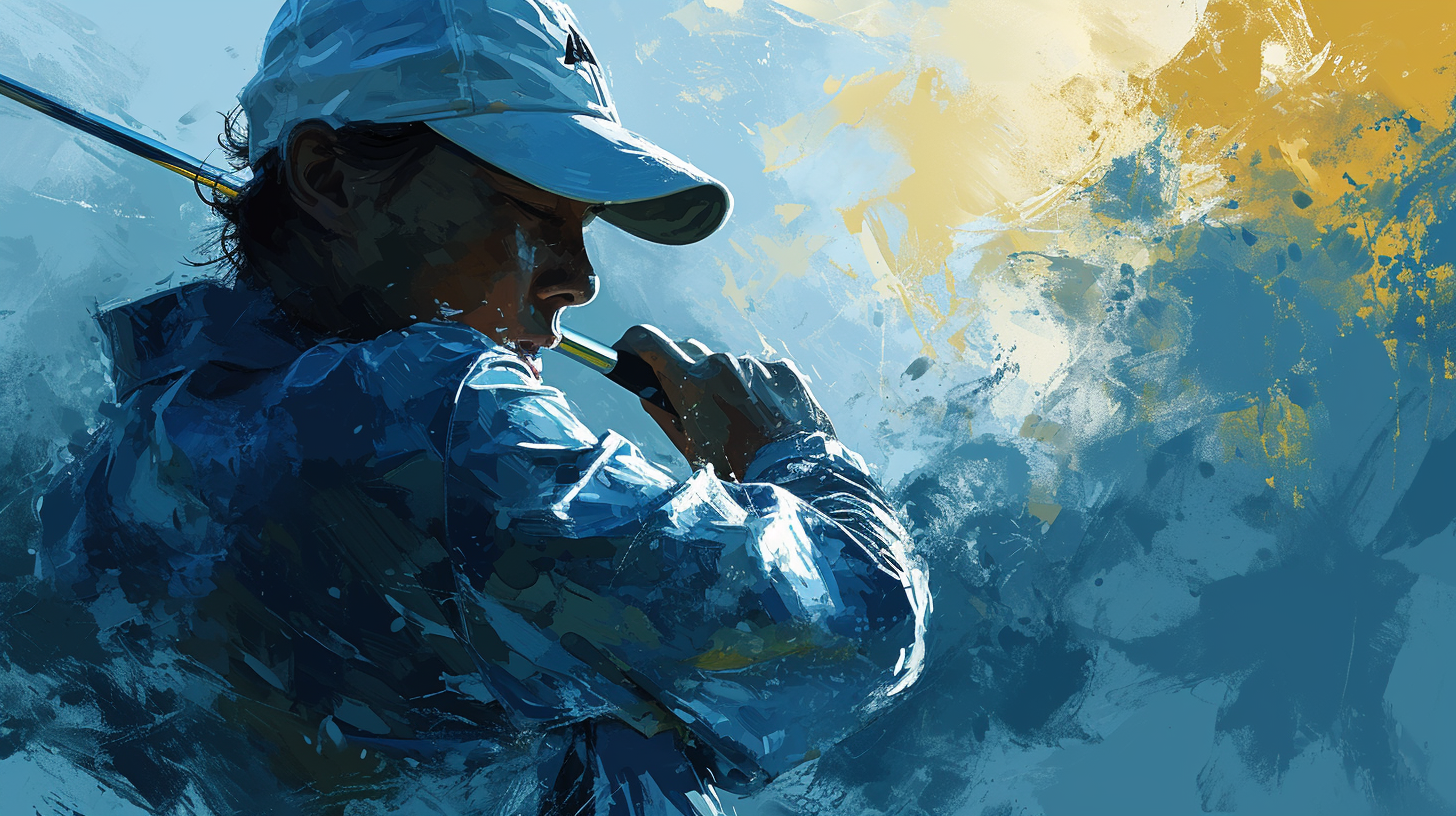Struggling to sweep the ball cleanly off the turf? Learn how mastering this counterintuitive move can add instant power and compression.
Shallowing the golf club is a crucial technique for striking shots pure like a tour pro.
Let’s break down exactly how to shallow the club using sequenced motions from the ground up to maximize your driving distance and iron play precision.
What Does It Mean to Shallow the Golf Club?

Shallowing the golf club refers to reducing the angle between the club shaft and the ground during the downswing. After taking the club back in the backswing on an upright plane, the goal is to transition into a shallower approach angle coming into impact.
This allows you to compress the ball properly and deliver maximum power and consistency to your shots. Shallowing out the golf club is a vital move for striking solid iron shots that launch high and land soft as well as maximizing distance with the driver.
Some key benefits of shallowing out the club include:
- Increased ball compression and higher launch angles due to steeper attack angles
- Ability to eliminate thin shots by avoiding a steep, descending blow
- Added distance and power due to efficient energy transfer to the ball at impact
- More consistent performance as shallow swings are less timing-dependent
In order to effectively shallow the club, the entire body must work together in the downswing to properly change the path of the clubhead.
This requires proper sequencing of weight shift, hip rotation, torso rotation, shoulder rotation, and wrist release in order to get the club approaching from an optimal, shallow angle.
Check Your Setup for Success

Before even beginning the backswing and attempting to shallow the club, it’s vital to start from an athletic setup position that facilitates the proper motion.
The specifics of your exact setup position may vary slightly based on physical limitations and the recommendations of your teaching professional. However, there are some basic concepts that every setup should feature in regard to facilitating a good shallowing move:
First, grip the club with a balanced grip that allows free release of the clubhead through impact. The hands should hold the club firmly in the fingers, not laying too much across the palm.
But avoid gripping tightly with tension that would inhibit a fluid swinging motion or release.
Good posture is also key, including a slight bend from the waist as well as flexion of the knees. Posture should feel athletic, not overly rigid and straight. Make sure your alignment is square, with the feet, knees, hips and shoulders all parallel to your starting target line.
As you can see, starting from a solid foundation is critical for successfully shallowing the golf club. A poor setup like bending over too much or gripping too tightly would undermine your efforts to make an aggressive swing and shallow out approaching impact.
Perform a Proper Weight Shift

One of the most important moves to shallow the golf club is executing a proper weight shift from back foot to front foot during the transition between backswing and downswing.
This initiates the downswing with the lower body, facilitating the correct sequencing to shallow the club automatically.
As you reach the peak of your backswing and prepare to start down, the weight should be loaded almost exclusively into your trailing foot. Pause for a split second at the top as you reach full wrist hinge then begin dropping into your front side.
Feel like you are bumping your left hip towards the target if you are a right handed player.
This lateral motion of dropping into the front foot actually lowers your body’s center of gravity downwards and towards the target simultaneously. It also encourages rotational forces which help shallow the plane of motion.
As the weight reaches the front foot, rotate through towards the ball to complete the downswing.
It’s easy to make the mistake of starting the downswing with your upper body and arms instead of your lower body. This is called casting, and leads to an over the top swing path and steep angle into the ball at impact.
Eliminate this error by intentionally bumping your left hip down and towards the target to start down then allow the arms and club to follow.
The weight shift itself shall allow gravity assist with shallowing delivery of the clubhead. When combined with proper rotational motion, it powerfully effects swing path.
Use Body Rotation to Shallow Automatically

The golf swing at its essence is a movement pattern driven by rotation of your body core. Winding up your torso fully on the backswing stores tremendous rotational energy in your core muscles.
Releasing this force properly on the downswing is what generates both speed and also ultimately influences swing path.
As you complete your weight shift towards the front foot to initiate the downswing sequence, keep turning your chest and shoulders away from the ball to maintain your coils. Although your lower body has begun dropping down, resist swinging the arms down prematurely.
Maintain lag where the clubhead trails behind your torso rotation.
Next, fire your core muscles to unleash the stored energy and pull your body rapidly back towards the target. Feel like your breast bone is turning sharply left if you are a right handed player.
The club responds to this rotational motion automatically by shallowing to your desired delivery plane.
The critical key is maintaining big body turn both back and through while controlling decent of the arms until just before impact. Let the club shallow and approach from the inside without forcing it explicitly with your hands and arms.
Simply focus on clean rotational sequencing and the path of your swing will improve dramatically.
Release the Wrists Fully Through Impact

Although much of the heavy lifting to shallow out the golf club occurs higher in the swing via weight shift and body rotation, a clean release of the hands and wrists is also imperative. The wrists serve as the hinge point where the club can change direction rapidly when unhinged.
A full wrist release refers to allowing the wrists that have been hinged during the backswing to begin rapidly unhinging just as they pass through the impact zone. This action serves a dual purpose of both shallowing the club as well as squaring the face for solid contact with the ball.
As the weight rolls onto the front foot and the torso unwinds powerfully, relax the grip and allow your wrists to release. The clubhead will naturally fall behind your hands on the correct inside approach angle rather than getting stuck behind your body.
Timing this motion correctly in sync with weight shift and rotation leads to tremendous power and compression.
Focus more on allowing your wrists to go limp and letting centrifugal force release the club rather than excessively flipping them towards the target. The clubhead should still be moving outwards away from you, just on a shallower angle that approaches from the inside.
This releases maximum speed through the hitting zone for eye popping distance!
Mastering the sequence of lower body, upper body, arms, then finally wrist release allows all segments to contribute power and also dynamically delivers the club on plane. The end result of this kinetic chain working in harmony is a tour-quality ball striking motion.
Practice Drills to Groove Your Motion

In order to fully own and embody the motion of shallowing the golf club, it will take quality practice to ingrain it into your muscle memory. Start slowly and smoothly focusing on key feels rather than overly aggressive speed until the pattern becomes second nature.
Precision before power!
Here are some useful practice drills to help you improve at shallowing the club for awesome ball striking:
Mirror and Alignment Stick Drill
Utilize a mirror and an alignment stick at the range. Set up your posture beside the mirror then lay the stick across the shoulders of your reflection. Keeping the stick perfectly across those points during the swing will guarantee proper upper body rotation through impact.
Don’t allow swaying off the ball or early releasing of rotational energy. When you can keep the alignment stick quiet through contact with body rotation alone, you have mastered the sequence.
In addition to checking rotation with the mirror, pay close attention to the plane of your club approaching the ball. Use the reflection as feedback to monitor for any casting or reaching that could steepen the angle of attack unnecessarily.
Keep pictures of the desired swing shape in your mind and match it rep after rep.
Hit Half Shots
Trying to shallow a driver swing that is very upright and vertical by nature can be quite challenging. Instead, focus efforts on your mid irons which naturally want to swing on a wide, shallow plane anyways.
Hit some half shots with a 6 iron where you take it back just waist high slowly then work on shallowing through impact.
Practice the weight shift motion of bumping your front hip downwards while keeping your back elbow tucked in close and trailing the hip motion. Because the swing is compact, it will be easier to get the club approaching from the inside.
Expand to 3/4 swings then full as you dial in the delivery.
Towel Swings
Grab a towel and hold it under both arms, connected behind your back. Make some smooth, moderate tempo practice swings attempting to keep the towel in place throughout.
This engages your core muscles effectively and prevents excessive arm swinging from displacing the towel. It also forces you into the proper rotational sequencing for shallowing rather than just relying on hands and arms which often get too steep.
Conclusion
Success in the golf swing generally occurs from the ground up. Building proper motion patterns through weight shift, rotation, and selective wrist release allows the club to shallow onto plane automatically.
Focus less on manipulating the club explicitly with your hands and more on getting your body into the correct sequence. This builds consistency under pressure and consolidates multiple speed sources into one harmonious action.
Mastering the move of shallowing the club may feel awkward initially if you have been swinging too steep your whole career. Remain committed to the world class instruction provided in this article and it will eventually click.
You will be blown away by the performance gains available and wonder how you ever played differently! The sweet spot becomes an endless well of power and you will pepper flags at will.



